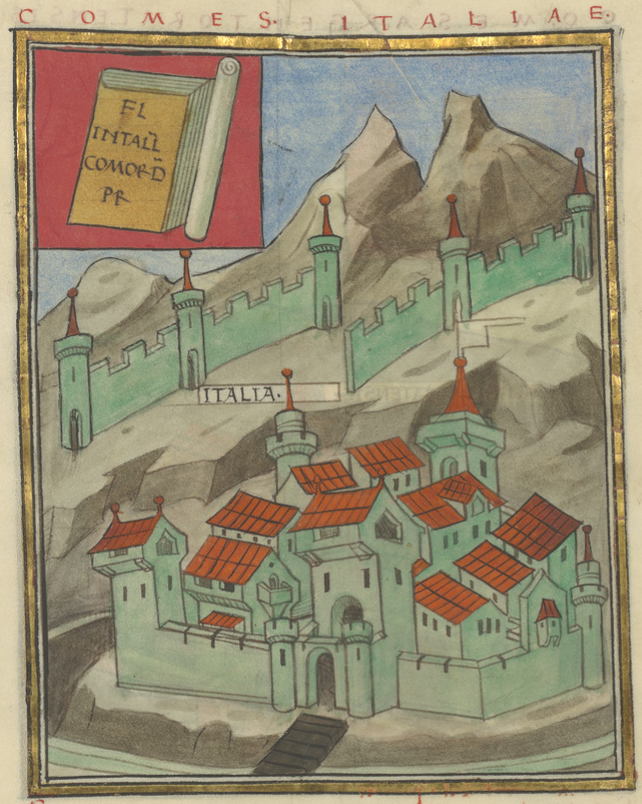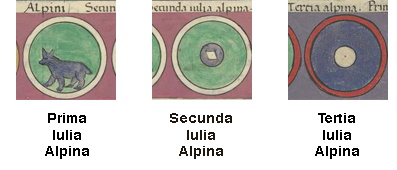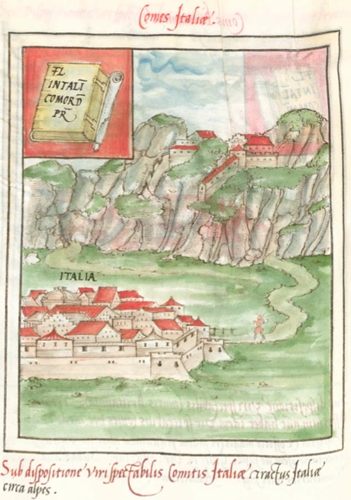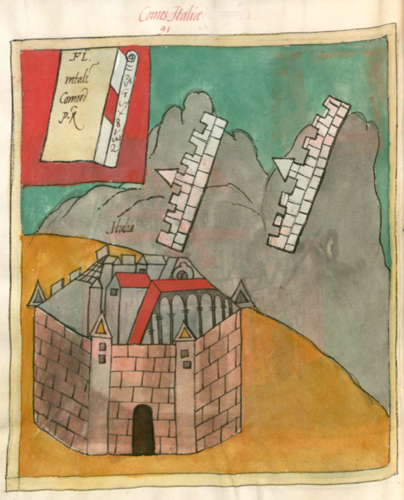
This page created 2 August 2014, and last modified: 29 April 2015 (Poulter reference added)


|
The Notitia has a section for a "Comes Italiae", as can be seen by its frontpiece illustration, shown to the left, and taken from the Parisian manuscript. However, the section is devoid of any troops, officers or towns; indicating the command, which seems to have covered the Julian Alps, and thus the easiest route into Italy for invaders from the northeast, was made defunct at some point after the the Notitia was first drawn up. In this it is similar to the command of the Comes Argentoratensis, which also has a section complete with frontpiece, but allocated towns, officers, or troops.
Nonetheless, that the former Comes Italiae may have commanded at least three legionary units in the past can be seen from the names assigned to them (but see below for a counterargument): 98/9.131 Prima Iulia/Alpina, a pseudocomitatenses legion serving in the Magister Peditum's Italian commandThe numbers in front of the names refer to Ingo Maier's numbering scheme. Their shield patterns are shown together below, using the patterns taken from the Paris manuscript:

Legio III Iulia Alpina, being a comitatenses unit, seems to have been given a "different" pattern from the other two, but the patterns of the First and the Second are clearly related, despite serving in different (temporary?) commands, and may perhaps be their "original" patterns under the Comes Italiae; if so, these units would appear to be an exception to the the conclusion that most units received new shield patterns when transferred into a field army for the first time; this exception may of course be explained away if they were transferred together to the same command, and only later split up. Other units recorded in the Notitia that may derive from the same command are the Tertia Alpini and the Tertia Alpini Dardanorum, both (auxiliary) cohorts under the Dux Provinciae Pannoniae secundae ripariensis et Saviae, and another Tertia Alpini: a cohort under the Dux Arabiae. These however, are more likely to have been named long before the Iulian Alps command was formed: Alpini as a unit name has a history going back to the first century for units formed from peoples of the western and not eastern Alps. However, the Dardanorum in Tertia Alpini Dardanorum implies a connection with the Balkans at some point; it may well represent the Cohors III Alpinorum equitata that was likely raised in the first half of the 1st century, and last recorded epigraphically in the early 3rd from Dalmatia (a Cohors II Alpinorum equitata is known from Dardania itself (then known as Pannonia Superior) in the early 3rd century, but the numbering doesn't match). |
Below are the corresponding frontpiece illustrations taken from the first set of pictures in the Munich manuscript (M) and the Bodleian manuscript (O):





Return to the Notitia index page.